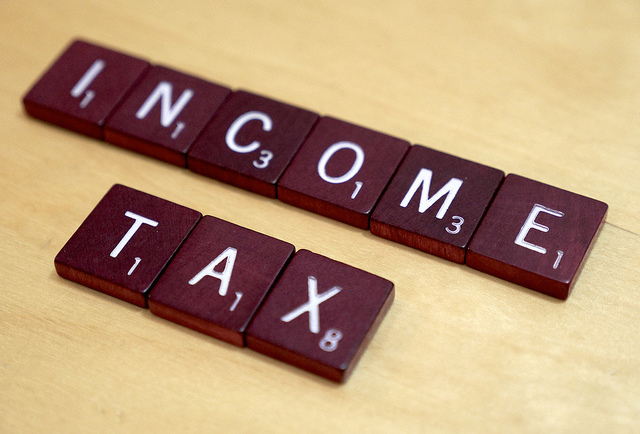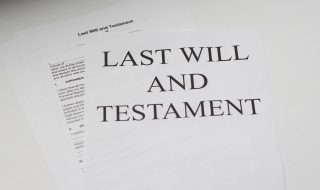
When the year is coming to a close, the taxman dress up as Santa Claus and comes knocking on your door. If you have earned at least $22,000 in a year, you will receive a notification from IRAS to file your tax return between February and March.
Nobody like to pay tax. Let’s admit it.
Fortunately, there is a way to not pay it or reduce the total tax liability payable. No and this guide is not going to teach you how to evade tax which is illegal in Singapore.
First thing first, before you learn the various ways on how to reduce your income tax, you need to know how the taxman calculate your taxable income.
There is a nifty calculator in Excel on IRAS website that you can download. There is also an iPhone App call IRAS SG that you can use to calculate your income tax payable.
In short, your chargeable income is calculated as (Employment Income – Employment Expenses) + (Other Income) – (Approved Donations) – (Personal Reliefs). If you are a parent, you can further reduce the tax by claiming Parenthood Tax Rebate (PTR).
From the equation, it is obvious that besides being poor, there are three things you can work on – approved donations, personal reliefs and rebates to reduce or eliminate your income tax payable.
1. Approved Donations
If you are not aware, you can claim 2.5 times the donated amount. For example, if you have made donation of $10,000 to an approved Institutions of Public Character (IPC). Your tax deduction would be $25,000. You can check if an organisation is an IPC here.
Things that you can donate are cash, shares, computer peripherals, artefacts, public art, land and building.
2. Personal Reliefs
There are many reliefs which you can claim to reduce your income tax payable. Let’s take a look at the various reliefs.
a. Earned Income Relief
This is basically a relief to recognise individuals who receive income from work. This will be automatically deducted if you are eligible up to a certain cap. You do not need to claim for this.
b. Spouse/handicapped spouse relief
You can claim for this if your spouse is earning less than or equal to $4,000 a year. You can claim $2,000 for spouse relief and $3,500 if your spouse is handicapped. (From YA2015, you can claim $5,500 for handicapped spouse)
c. Qualifying/handicapped child relief (QCR/HCR)
Likewise, if you have kids you can claim $4,000 per child or $5,500 for handicapped child. (From YA2015, you can claim $7,500 for handicapped child)
d. Working mother’s child relief
This relief is to encourage women to remain in the workforce after having children. The amount you can claim ranges from 15-25% depending on the number and order of children. Please note that there is a cap of $50,000 per child, which includes QCR/HCR.
e. Parent/handicapped parent relief
This relief is to promote filial piety and you can claim for this if the dependant shared the same roof as you. If the dependant is staying in a different household, you must have incurred at least $2,000 in supporting him/her to be eligible for a claim.
If dependant is staying in your household, you can claim up to $7,000 per dependant (or $11,000 for handicapped parents). If dependant is not staying in your household, you can claim up to $4,500 per dependant (or $8,000 for handicapped)
f. Grandparent caregiver relief
This relief is for mother who are working and have engaged their parents/grandparents or in-laws to look after the children. The amount claimable is $3,000 on one parents/grandparents/in-laws.
g. Handicapped brother/sister relief
If your siblings are handicapped and you are supporting them, you can eligible to claim $3,500 for each sibling. (From YA2015, you can claim up to $5,500) Note: If your parents have claimed HCR on your brother/sister, you cannot claim for this relief.
h. CPF Relief
CPF relief is given to encourage individuals to save for their retirement. You can claim on your compulsory employee CPF contribution and any voluntary contributions to your Medisave account. If your employer is in the Auto-Inclusion Scheme then this will be automatically calculated. If not, you will need to claim this yourself. Please note that you can only claim if your employee CPF contributions has not exceeded the Ordinary and Additional Wage Ceiling. OW is currently $5,000 a month. Additional wage refers to annual bonus and leave pay and the formula used to computer AW ceiling for 1 Jan 12 – 31 Dec 13 is $85,000 minus total OW. AW is subject to a cap of $37,000.
For more details on the calculation, refer to IRAS website.
i. Life Insurance Relief
You can claim for this if you have bought insurance for yourself and your wife. If you are a married female and satisfy the various conditions, you can only claim for your own life policies and not your husband’s. The amount claimable is the lower of $5,000 less your CPF Contrition or up to 7% of the insured value. Note: If you contributes more than $5,000 for CPF, you are not eligible for this.
j. Course Fee Relief
The government wants the workforce to be equipped with the necessary skills and encourages individuals to constantly upgrade themselves through course so as to enhance employability. You can claim up to a maximum of $5,500 per year.
k. Foreign Maid Levy Relief
Foreign Maid Levy (FML) relief is given to encourage married women to continue to be in the workforce. Thus, if your household has employed a maid, you are eligible for this levy. You can claim twice the amount of levy on one domestic worker paid in the previous year.
l. CPF Cash Top Up relief
This relief is to encourage individuals to top up their Retirement or Special Account under the CPF Minimum Sum Topping Up Scheme. You are also entitled to the relief if your employer made the top-up for you. You can claim up to a cap of $7,000 for self and an additional $7,000 if you top up the account of your spouse, siblings, parents, grandparents and your in-laws.
m. Supplementary Retirement Scheme (SRS) Relief
If you have contributed to SRS, you can claim the amount up to the maximum cap of SRS contribution of $12,750 if you are a Singaporean/PR or $29,750 if you are a foreigner.
n. NSman (Self/Wife/Parent) Relief
For the guys, here’s another bonus for you if you have completed your national service. The general population can claim up to $3,000 if you have performed NS activities in the preceding years or $1,500 if you haven’t. For key appointment holders, you can claim up to $3,500 and $5,000 respectively.
For the ladies and parents of Neman, you can claim a deduction for $750 for the support you have given to your husband/son.
3. Parenthood Tax Rebate (PTR)
Lastly, you can claim a rebate from your tax payable if you qualify for PTR. This should be differentiated from tax relief which reduce your chargeable income. It is offered to married Singapore tax residents as an incentive to encourage them to have more children. You can claim up to $5,000 for the 1st child, $10,000 for the second and $20,000 for the 3rd and beyond. This amount can be shared between you and your spouse to offset the tax payable.




